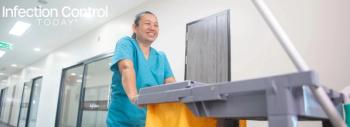
Microbiologist Discovers Herbal Medicine Treatment for Common Human Fungus
A Kansas State University microbiologist has found a breakthrough herbal medicine treatment for a common human fungal pathogen that lives in almost 80 percent of people.
Govindsamy Vediyappan, assistant professor of biology, noticed that diabetic people in developing countries use a medicinal herb called Gymnema slyvestre to help control sugar levels. He decided to study the microbiological use of Gymnema slyvestre -- a tropical vine plant found in India, China and Australia -- to see if it could treat a common human fungal pathogen called Candida albicans.
The investigation was successful on two levels: Vediyappan's research team found the medicinal compound is both nontoxic and blocks the virulence properties of the fungus so that it is more treatable. The results are important for human health, biomedical applications and potential drug development.
"We have shown that this compound is safe to use because it doesn't hurt our body cells, yet it blocks the virulence of this fungus under in vitro conditions," Vediyappan says. "Taking the medicine could potentially help patients control the invasive growth of the fungus and also help bring their sugar levels down."
Candida albicans is one of the major fungal pathogens in humans because it lives in oral and intestinal areas as a normal flora, Vediyappan said. But the fungus can overgrow and can cause oral, intestinal and genital infections. The fungus kills almost 30 percent of people who have it and it is a concern among cancer patients -- especially patients with neck or oral cancer -- HIV patients, organ transplant patients and other people with compromised immune systems.
The fungus can grow in two forms: a treatable yeast and a difficult-to-treat hyphal form. Once the fungus transforms from a yeast to a hyphal growth it becomes difficult to treat because the hyphal growth has long filament-like structures that can spread into various organs. Vediyappan's study aimed to block the hyphal growth form.
"Once it gets into the tissue, it spreads like roots and is difficult to contain by our immune system," Vediyappan says.
If the fungus remains in yeast form, it is easy to manage and does not invade tissues. Vediyappan's research team purified gymnemic acid compounds that prevented the transition stage from occurring and stopped the fungus spread. The gymnemic acids come from the leaves of Gymnema sylvestre, a traditional medicinal plant.
The research appears in the peer-reviewed journal PLOS ONE in an article titled Gymnemic acids inhibit hyphal growth and virulence in Candida albicans."
Gymnema extract is commonly used to treat diabetes and other ailments because it is a cost-effective treatment, Vediyappan said. Often, people drink the extract to control their sugar levels or to lose weight.
Although Vediyappan's research team is not the first to discover gymnemic acid compounds, the team is the first to discover that the compounds block the fungal transition. The researchers found that the compounds work quickly, too, which was an important characteristic. The treatable fungal yeast can transition to a hyphal growth within 30 minutes of an infection. When the hyphal transition has occurred, it will grow into branched filaments.
The gymnemic acid compounds are nontoxic, which is especially important for cancer patients and other immunocompromised patients. The gymnemic acids can stop the unwanted invasive infection while preserving important healthy cells.
The Candida albicans fungus also makes a biofilm, which is a fungal cell collection that can be difficult to treat. The researchers found that the gymnemic acid compounds converted the biofilm back to treatable yeast cells.
"This compound prevents the biofilm formation because hyphae are the major builders of biofilms and biofilms are resistant to antifungals," Vediyappan says. "Yeast cells by themselves cannot make biofilms and are sensitive to antifungal treatments."
Another interesting aspect: The gymnemic acid compounds also stopped the growth of Aspergillus, another fungal pathogen that can affect heart transplant patients and leukemia patients.
Vediyappan plans future studies to research mode of action, potential drug development, diabetes applications and other ways to improve treatment for Candida albicans and other fungal pathogens.
Funding for the research came from Kansas State University's Johnson Cancer Research Center and K-INBRE at the University of Kansas Medical Center. Collaborating researchers include Vincent Dumontet and Franck Pelissier with the Natural Product Chemistry Institute, part of the National Center for Scientific Research, in Gif-sur-Yvette, France; and Christophe d'Enfert with the Fungal Biology and Pathogenicity Unit in the Department of Genomes and Genetics at the Institut Pasteur in Paris, France.
Source: Kansas State University
Newsletter
Stay prepared and protected with Infection Control Today's newsletter, delivering essential updates, best practices, and expert insights for infection preventionists.






